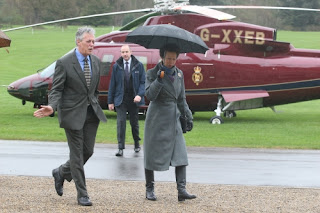
HRH Princess Anne visited Harewood today ahead of our new exhibition season… The Princess was greeted by Lord and Lady Harewood, Harewood Chief Executive Mike Schafer and Harewood House Staff. Presented with one of Harewood’s new roses, Rosa ‘Yorkshire Princess’ the Princess toured the exhibitions on the State Floor, ‘Royal Harewood: Celebrating the Life of the Yorkshire Princess‘, as well as our temporary exhibition in the Terrace Gallery ‘Marcus Adams: Royal Photogrpaher‘…

Celebrating the Life of The Yorkshire Princess
Harewood was home to HRH Princess Mary, The Princess Royal, through four decades. Her love of Yorkshire and the affection the people of Yorkshire felt for her in return mean that she will always be remembered as ‘The Yorkshire Princess’.
Princess Mary married Henry, 6th Earl of Harewood in 1922 and they moved into Harewood House in 1929. They were avid collectors and, with the generous help of the Heritage Lottery Fund, we will be displaying for the first time many of the things that were precious to her: personal items such as exquisite fans, gifts from heads of state, presents from her royal relations by the great designer Fabergé. These displays provide a glimpse into the life and loves of a very ‘Yorkshire Princess’.
Marcus Adams: Royal Photographer

In the Terrace Gallery a special collection of photographs taken by favourite royal photographer Marcus Adams, and generously lent by The Queen from The Royal Collection, capture with wonderful charm the young Princess Elizabeth, life as the new royal family, the pre-war years and then later a new generation of royals; Prince Charles and Princess Anne. Don’t miss the opportunity to see these striking, fun, informal and vibrant photographs.
Visit the House this season and round your visit off with a delicious cream tea in the Terrace Café! Marcus Adams exhibition open until Sunday 17 June, and Royal Harewood: Celebrating the Life of the Yorkshire Princess runs until 30 Sept.
Click here to visit our exhibitions pages
